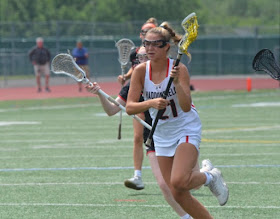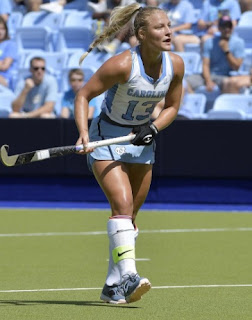“It’s not fair, my daughter wants to play lacrosse. Why can’t our school add girls lacrosse as a sport?”
This seems to a phrase that AD’s in Illinois, and probably throughout the nation are hearing from parents. You can take out “girls lacrosse,” and replace it with boys lacrosse, boys volleyball, girls flag football, badminton, gymnastics, and many more. I am sure after the Olympics there will be a push for biking, team handball, and many other sports. In Illinois, the “growing sports” seem to be boys volleyball, boys/girls lacrosse, and girls flag football.
I am sure there are many factors involved when a school decides to add a sport. My anecdotal evidence is that the “adds” are the result of a parent who has developed his son/daughter’s interest in the sport thru the years. In the ‘80’s and ‘90’s that seemed to be how soccer developed. Dads had grown an interest in the sport.
It doesn't hurt if the “right people” (ie. money) are interested in the sport. It is not always the case but it doesn’t hurt if some of the wealthy in a community push a sport- they tend to know how the local political game works.
Girls flag football is a classic example of money interests promoting a sport. To my knowledge, there was zero interest in the sport until the NFL threw millions of dollars nationally into the sport. Whether adding the sport is a good idea or not, it is a program created by NFL dollars. The NFL recognizes interest in youth and HS football is diminishing. The NFL is creating the interest in flag football to try to create a push interest in a sport that is staggering.
There are misunderstandings about what role Title IX plays in adding sports. The popular but inaccurate thought is that “if we add a girls sport, then we have to add a boys sport, or it is a Title IX violation.” And of course, the statement can be reversed. Schools do not have to have the same number of girls and boys sports.
When you look at colleges, most colleges in order to meet Title IX offer significantly more sports for women than they do for men. It is typical for colleges to offer 14 women’s sports but only 10 men’s sports. Because of the number of football players, in order for colleges to have a balance in total number of participants, they need to have more women’s sports. So on a HS level when someone throws out that they either have to add a sport or that they cannot add a sport because of Title IX, be careful about believing that argument without a little research.
The major Title IX concerns are in the following areas:
1- Total number of male participants and total number of female participants
2- Ratio of staff to female athletes as compared to ratio of staff to male athletes.
3- Amount of money spent per female vs male athletes.
4- Quality of facilities used
5- Access to competition during "prime time."
One of the fundamental things to examine if a school wants to add a sport- who are you going to be able to play? In the early years of girls sports, Galesburg HS’s best girls sport was field hockey. The teams were really good, and the girls loved the sport. Area schools found they could not get the number of girls to go out for field hockey in order to make it work. Galesburg dropped field hockey when the closest opponents were in the Chicago suburbs.
Presently in lacrosse, there appear to be only 3 schools within 90 minutes of Galesburg, and the other schools would all be 2-3 hours away. Boys volleyball, the closest schools would be in Rockford or St. Louis metro. With flag football, the closest schools playing are a couple Peoria schools, and Rockford and Danville.
A continuing trend and problem in HS athletics is the number of non-teachers who are needed to coach sports. Non-teachers can be good coaches but as schools add more and more non-teachers to coach sports, it is only natural the relationship between educational values and sports becomes harder and harder to maintain. Many high schools have trouble finding coaches for their existing sports, adding sports will compound the problem.
Facilities become more and more of a concern. Presently football, both soccers, and both tracks have to juggle the schedule to use the football field and practice fields. Inside facilities are even more limited. In some cases, it is difficult for schools to provide facilities.
New Trier has girls lacrosse and boys volleyball, why can’t we at Galesburg? As parents, we want our kids to have all the opportunities that a kid in New Trier has. In addition to the sports that Galesburg offers, New Trier offers for boys and girls- water polo, lacrosse, volleyball, fencing, badminton, and rowing. New Trier also offers 7 foreign languages- Spanish, Latin, German, Chinese, French, Japanese, and Hebrew. New Trier offers 25 AP courses.
Obviously New Trier’s tax base is much better than Galesburg. New Trier HS has 3908 students. Galesburg HS has 1,232 students. Galesburg had only 348 students go out for a sport last year.
I throw out all these numbers to try to paint a picture that if a school like Galesburg were to add more sports, where will they get the athletes. If you added flag football, what would it do to the numbers in volleyball, golf, tennis, and cross country? If you added girls lacrosse, what impact would it have on softball, track, and soccer? If you added boys volleyball, what impact would it have on baseball, track, and tennis?
If small schools add a sport or sports, what sport would you be willing to cut to make room for the new sport? Small schools cannot do all the things that suburban schools can do. Most schools probably need to be asking not what they want to add, but what do they need to drop.
Lastly, an argument is that we need to realize that adding a given sport might provide an athlete a “scholarship” opportunity. Realize on D1 level, only 6 sports are mandated to give full scholarships- football, mens basketball, women's basketball, women's volleyball, women's tennis, and women's gymnastics. All other sports are not full scholarship sports. With the present landscape of colleges, it is possible that in ten years there will only be scholarships and NIL given to 2-3 sports, and all the other sports will be D-3 in nature, with no scholarships.
Many schools don’t have the enrollment to support offering a course in Japanese, to support offering 6 AP science courses, and to support offering more sports. So for many small schools with decreasing enrollment, adding sports is not feasible.








No comments:
Post a Comment